

DIY Cruising Catamaran: Complete Building Guide
As an Amazon Associate, we earn from qualifying purchases. We may also earn commissions if you purchase products from other retailers after clicking on a link from our site.
A brand-new cruising catamaran can set you back a hefty amount of money. However, a DIY cruising catamaran provides a more affordable way to own your own boat. While building a large boat can be an extremely challenging and time-consuming experience, nothing beats the pleasure of bringing your own boat to life.
To build a DIY cruising catamaran, buy good design plans, determine your budget and find a working space. Next, choose your hull material, buy supplies and start building the mast beam. Build and sheathe the hull, install bulkheads, the interior, and finally, launch the catamaran boat.
In this article, you will find a complete guide to building your own catamaran. You will also find detailed information on why you may want to consider building your catamaran and approximately how much this project would cost. Finally, we will explore the advantages and disadvantages of building a catamaran from scratch.
Why You Might Want To Build Your Own Catamaran
Most people might think that purchasing a used boat to repair and fix it up would be cheaper than a DIY cruising catamaran. But while building your own catamaran could be an enormous undertaking, it also comes with many advantages over buying something used.
Other than the unique opportunity to create beautiful memories and experiences while cruising, sailing, and exploring beautiful coastlines, there are a number of benefits that come along with the DIY approach.
Knowing Your Boat
Building your own catamaran provides you with intimate knowledge of your boat. You will know every corner, including where to find every bolt, wire, bulkhead, rib, hose, and support as you installed them yourself. This knowledge will enhance your confidence while at sea since you will have entrusted your life to a boat whose history you are aware of and deeply connected to.
Pride of Ownership
The satisfaction you get from crafting something with your own hands is immense. As a result, the knowledge that you built your boat from scratch will fill you with absolute pride and an immense sense of achievement. Furthermore, as an owner-builder, you get to keep and enjoy the boat for as many years as you wish.
Substantial Cost Savings
Building your catamaran will work out cheaper than buying a new or even gently used boat. Though you will likely require some additional labor since doing some things will require an extra pair of hands, if you are particularly good at DIY, you will save a significant amount of money on labor costs as a whole.
Freedom To Create Your Own Designs
If you decide to buy a catamaran boat, it might not be easy to find one that meets your unique needs. However, instead of choosing from production boats that bear traditional and outdated designs, you can come up with an ultra-modern design or style for your catamaran. You also get to pick your layout, size, and equipment based on your taste and budget.
Great Learning Experience
Building your own boat will help you pick up numerous skills that will come in handy later when sailing your boat. As much as you might still require an expert to help you with specialized skills like carpentry or wiring, your new skills will serve you well. This will also be beneficial when it comes to your boat’s maintenance and fixing things for yourself.
What To Look For in Catamaran Boat Designs
When deciding on the type of catamaran boat to build, you may want to choose a design that’s simple and easy to build. This is because doing so will allow you to spend a shorter time building the boat.
You also need to have a set of requirements to guide you in choosing your design or what you might call an ideal cruising catamaran wish list. This is essential because, ultimately, you want to build a boat that offers outstanding qualities such as:
- Delivers good speed
- Affordable to own and operate
- Agile, strong, and easy to maintain
- Has a high resistance to capsizing
- Great for sailing and cruising
- Delivers a comfortable and easy motion underway
- Good handling ability and high performance under sail
- User-friendly embarking and disembarking
- Provides ample living and accommodation space
- Presents a reasonable resale value
It’s worth noting that, in general, catamaran boats tend to offer a fair resale value mainly because of scarcity and the high price accorded to production models. So, if you build a well-constructed catamaran, you are bound to get a return that’s much higher than the cost of materials upon resale.
It’s also good to consider whether the design you settle on is from an established designer. This is significant because documentation of the building process is just as valuable when it comes to selling the boat.
How Much Would It Cost To Build Your Own Catamaran?
The cost of building your cruising catamaran will depend heavily on the size of the boat you plan to build and the skills you bring to the table. To give you an idea of probable costs, a professionally built 40 foot (12.1 m) long cruising catamaran could go for up to $300,000.
Though building it yourself will undoubtedly be cheaper, most DIY boatbuilders tend to underestimate the expected costs. Your final costs should cover not only the cost of material and equipment but also the labor and time it would take to come up with the final product.
If you were to build a 40-foot (12.1-meter) catamaran, your cost of materials would range between 20-30% of the total cost. Therefore, for $300,000 total, the boat’s materials would range between $60,000 and $90,000. The hull tends to range between 15-35% of the total build. Again, this depends on the finish and furniture.
But before you even start working on the DIY project, you will need to figure out where to do the work. If your home has ample space, then you can opt for a backyard building. But if you live in a small apartment, then you might want to consider renting a small garage at first and then move on to a boatyard later. This is one of the significant costs involved in building your multi-haul.
What You Will Need
To get a clearer picture of how much the entire project would cost, let’s have a look at what else you will need to purchase.
- Good design plans
- Working space
- Ground tackle
- Matting and roving
- Equipment such as the engine, windows, rudders, deck fittings, mast, and rigging
In addition to the above, you also need to install plumbing and electricals. You may also want to consider going electric rather than using diesel. Not only will this drastically reduce your maintenance costs, but you get to use the regenerated power for all of your housing needs while sailing.
Some catamaran boat designs help you save costs by advocating the use of less expensive corpus materials. Most of the material goes directly into making the boat, which means there is hardly any wastage on vacuum bagging . With this method, there are few molds and temporal building forms and fewer fillers to grind off as waste. All these factors reduce the time and cost it takes to build your catamaran boat.
That said, building a boat of any kind is a huge financial undertaking. As such, you still need to have the financial ability to keep building; otherwise, your project will stall or take much longer than anticipated. Instead of enjoying yourself and making memories cruising to faraway lands, you might end up spending all your time building a seemingly never-ending boat.
To reiterate, this project is more of a labor of love, given that it involves a tremendous amount of manual work. Calculating an hourly rate on the time spent building the boat and adding this cost to that of materials may make it seem a very pricey exercise. However, it is vital to understand that your time matters, and every hour you spend working for “free” should be included.
With that in mind, you need to ensure that you are fully devoted to the boat construction project and are sure you want to do it before you begin. Stopping halfway because it seems like too much work would be incredibly costly.
How To Build a Catamaran
When it comes to building a cruising catamaran, you have 3 main options:
- You can buy an old boat and refurbish it.
- Purchase a bare hull plus deck molding for a home-boat building.
- Start from scratch and build everything, including the hull, on your own.
As mentioned above, renovating an existing boat may end up being more costly than starting from scratch. To build a catamaran boat from scratch, follow the below step-by-step guide.
Prepare the Essentials
Before you jump into such a large project, there are several important aspects to consider:
- Buy your plans from an established catamaran designer. You can also get inexpensive, easy-to-build catamaran designs online.
- Get access to a large working space or build a shed . Depending on your climate, you may need to opt for climate control to avoid an excess of moisture in humid areas.
- Decide on your choice of hull material. This could be fiberglass, aluminum, steel, wood, or ferroconcrete.
- Start working on a bill of materials estimate. Include everything that you think you need to get a better idea of the initial costs.
Build the Mast Beam
Using wood and epoxy, cut and glue together the pieces of wood that will form the mast beam. Most of the work at this stage can occur in a garage since it involves building small parts. Still, the work could take up to 4 months, so be prepared to put in long hours.
Build the Boat Hull
Now, it’s time to build the boat’s hull. A catamaran comprises two hulls which are connected with a deck. Below is a short video showing how to build a hull mold:
This work requires a larger facility, so you might need to move out of the garage and into a boatyard. If you don’t have access to a larger workshop, consider building a shed where you can work as you do the construction. Make sure there’s enough room to fit the boat and also allow you to work comfortably. To cover the shed, you can use opaque white tarps.
Sheathe the Hull
Get all the materials you require for this stage in the construction, such as lots of resin, fiberglass, and foam for use in the hull cores. You’ll also require matting and glass roving to sheath the hull .
Sheathing helps to make the hull impervious to water and other marine borers. But first, you need to prepare the hull using a rotary sander. To make it as smooth as possible, use light, sweeping strokes. This is a very dusty task so be prepared to wear a facemask and safety goggles.
Install the Bulkheads
Next is installing the plywood bulkheads . You might need to call in friends to help turn the hulls or use a crane. In this step, you will need to laminate the hull sides on the molded hull panels and bond them above the bulkheads. Ensure the bulkheads are snug and sealed in place.
Construct the Interior Structure
Over the next couple of months, the boat work will involve joining the hulls together with the beams that you had made back in the garage. Then, install the cuddy cabin, decks , and the cockpit . Soon the boat will start to take the shape of a catamaran.
Next, proceed to construct the major structural components such as stairs, hatches, mini-keels, and the interior. Then comes the work of fairing the boat, which is quite labor-intensive.
Finally, it’s time to apply primer on the catamaran boat and start the paintwork. Before painting the boat, you will need to do additional sanding to finish off the two layers of primer as well as fill all the pinholes. Since it’s a large boat, the catamaran has lots of surface area; thus, the sanding could get extremely exhausting—mentally and physically—at this point.
The painting can take a while, too. The hulls are the easiest to paint, but the topsides, non-skid, as well as masking and prepping could seem never-ending.
The final stretch involves working on the center bridge deck cabin and other final touches like installing the engines, electricals, and plumbing. This is also the time to fix the rudders, rigging, mast, windows, and deck fittings.
Launch Your Cruising Catamaran
After many months or years of hard work, your cruising catamaran is finally ready to test the waters. After lowering the boat into the water, check carefully in case there are leaks. If none, you can set up the sails and take your catamaran out for your first cruise.
Below is a short video that takes you through the entire boat-building process:
If you don’t have deep pockets, don’t despair. It’s also possible to build an inexpensive catamaran boat, as shown in this post from the coastal passage .
The Pros of Building a Catamaran
Though it will be a costly endeavor, there are so many things to look forward to should you decide to build your own catamaran:
- It can be lots of fun.
- You get to have a new boat.
- It’s an excellent hobby for DIY enthusiasts.
- The effort is rewarding.
- It offers a great learning experience.
- You get the exact kind of boat you want.
- You can alter building plans and tailor the boat to suit your specific needs.
- It might be cheaper than buying a new boat.
The Cons of Building a Catamaran
Though there are a number of positive aspects to a DIY build, it is just as important to keep in mind that it won’t always be easy:
- Maintenance costs can be quite high.
- It’s both mentally and physically exhausting.
- It might require some technical know-how.
- It can take many months or even years to complete.
- It requires a lot of commitment to finish the DIY project.
- It might be challenging as well as expensive to get insurance.
- You will spend almost all your free time building the boat.
DIY Cruising Catamaran Tips and Tricks
If you are new to boat building, it would be a good idea to build a small boat first. This would give you a good indication as to whether you’d enjoy tackling a more extensive project like building a catamaran. Again, if you are the handy type, fixing your own electronics could also save you a significant amount of money.
Here are more tips and tricks to get the most out of your DIY cruising catamaran:
- Lower your costs. Bring down your costs even further by sourcing for parts and supplies at marine surplus outlets, Craigslist, eBay, or wholesale suppliers.
- Enhance your resale value. Most home-built boats are not easy to sell since they tend to be too customized. To enhance your resale value, it’s advisable to work with a standard design from a well-established naval architect.
- Follow the design instructions. Make sure to follow the designer’s instructions regarding the type of materials and tools to use during the build to avoid making costly mistakes.
- Maintain your original budget. Avoid any additional customizations once you have started building the boat. Using good plans and sticking to them ensures that your budget doesn’t spiral out of control.
Final Thoughts
Building a catamaran is about more than saving money. It’s fun, exciting, fulfilling, and can be a great learning experience. While it might take many months of back-breaking work, comparative shopping and sourcing for materials will help you save a lot of money. Still, at the end of it all, you’ll have a beautiful catamaran boat, all ready for your first cruising adventure.
However, if you have neither the time nor the energy to build your own catamaran from scratch, refurbishing an existing hull might prove faster and easier. It also works out much cheaper than buying a new boat.
Owner of CatamaranFreedom.com. A minimalist that has lived in a caravan in Sweden, 35ft Monohull in the Bahamas, and right now in his self-built Van. He just started the next adventure, to circumnavigate the world on a Catamaran!
One thought on “ DIY Cruising Catamaran: Complete Building Guide ”
Hello, I am a French Quebecer who is original, imaginative, creative and who finds that all boats and catamarans have a huge flaw and a very big lack of logic. I would have a brand new concept…. I am sending this message to any catamaran creator – designer to make those who have the opportunity and the intelligence to want to know about my innovative idea which will finally upset the market much richer. An idea that will totally change the concept of sailing, navigation and save so much worry!! All I would ask for is a small percentage of each sale of the new product. To be able to make me produce one when I have enough!! It is certain that like that, you just want to tell me: come on Mr. Lessard give us your idea but do not take your word to help me in return! But, if you are the kind of man to have only one word and maybe have a proof of your good faith if the realization of the project would make it… I will be very happy!! Giving it to everyone wouldn’t bother me either…. all I would like is to be able to find flax fiber (too expensive carbon) to be able to try to make my catamaran myself. Because not rich! Have a nice day and looking forward to having a message!!
Leave a Reply Cancel reply
Your email address will not be published. Required fields are marked *
Save my name and email in this browser for the next time I comment.
Recent Posts
Must-Have Boat Gear for Catamaran Sailors!
Sailing is probably the most gear-intensive activity I've ever done; there are so many decisions to be made about what gear to buy now, for tomorrow, and what to definitely never buy. The gear on...
6 Best Trailerable Trimarans For Bluewater and Coastal Sailing
Having a boat costs a lot of money, even when you are not using it, marina fees, etc. And once it is in the water most sailors never go very far from their "home marina" and sailing will be somewhat...

MIKE WALLER
Yacht design.

WE SPECIALIZE IN BOAT PLANS FOR AMATEUR BUILDERS
We provide stock boat plans for both monohull and multihull sailing vessels, including sailing skiffs and sharpies. Our designs mainly feature timber construction, in plywood or cedar strip plank composite construction, using the W.E.S.T. system (wood epoxy saturation technique). Our designs are intended mainly as cruising boats, although several have done well in racing. All designs are suitable for amateur boat builders.

MONOHULLS
multihulls , photos from our builders.
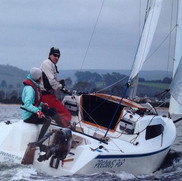
Photo galleries are provided on each design page where available

- No products in the cart.
Catamarans and Trimarans
Catamaran and Trimaran Boat Plans make it a reality to build your own catamaran or trimaran. Multi-hulled sailing vessels are a special class of boat. A very different mind set is required when thinking about sailing a multi hull, let alone getting your head around building one.
There are some unique challenges building a multi-hull sail boat, the extra beam added by each hull for instance can create storage issues while under construction. Hartley boat plans make the build process straight forward for even amateur builders. However with all things considered, building a multi can be an amazing journey.
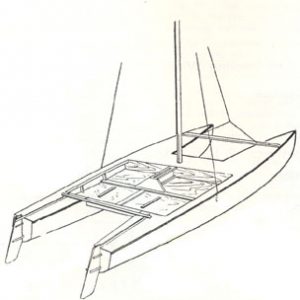
Fast Twin Catermaran
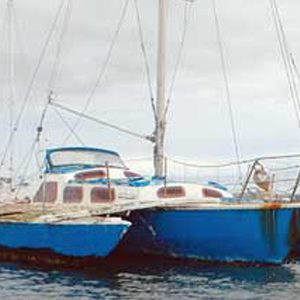
Lively 28 Cruising Trimaran
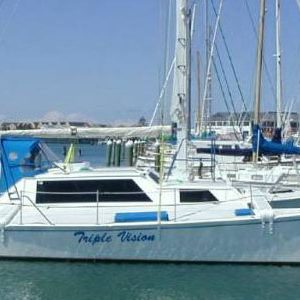
Lively 35 Cruising Trimaran
HOME / INDEX PAGE
[email protected]

Category: Our Catamaran Build Kits
Recommended equipment.

Quality suppliers & manufacturers
The schionning team have a lot of contact with equipment suppliers and manufacturers, and hear feedback on certain brands or systems from our many customers. there are many schionnings cruising the world and testing products longevity and the customer service offered by the manufacturer., on this page we will list products and companies that we know to provide above average quality and service. it is always growing, and if your company provides equipment used on our designs and you would like to be included - please contact us., engines & drive systems.

Visit: https://oceanvolt.com
Batteries, Power Management

LITHIUM POWER (VIC)
Back in 2013 I knew that my boat batteries were reaching the end of their lives, I had been researching LiFePO4 cells for a few years and decided that I should install them. Unfortunatly I was unable to find a local supplier. So Lithium Power was established.
Technical Information
The technical information page is a collection of documents (mostly in pdf format) on the materials and systems used in schionning catamarans. including data sheets, engineering information, strength comparisons of each core material and informative articles from jeff outling the design of certain system such as engine choices and main sheet systems., detailed engineering data for your research, we understand that getting your head around the process of building your own boat, or having one built, can take a little while. to gain a greater understanding of the materials used in our designs, the below data sheets have been supplied by atl composites, and contain all of the technical data you could need regarding the composites we use. in addition are articles or documents written by jeff about certain systems used on our designs and why., all technical information and data sheets on west system/duflex/durakore provided courtesy of atl composites. for more information please see the atl composites website here., documents library.
Information Sheet – CE CERTIFICATION PROCESS
- Mainsheet Systems for Catamarans
- Motor Choices for Schionning Designs
- Weight and Weight Distribution Schionning Designs
- Schionning Designs Sailing Performance and Tips
- Hull Shapes and Performance – Power Designs
- Outboard Engines VS Diesels – Written by Ross McCombe
- An Outboard Installation That Works – Ross McCombe Follow up
- Data Sheet – DUFLEX BALSA for Catamaran Kit Builds
- Data Sheet – DUFLEX FOAM
- Data Sheet – FEATHERLIGHT Paper Honeycomb
- Data Sheet – WEST SYSTEM R105
- Data Sheet – PUMP SYSTEMS
- Data Sheet – MICROFIBRE BLEND 403
- Data Sheet – MICROLIGHT 410
- Data Sheet – MICROSPHERES 411
- Information Sheet – USING FILLERS
- Data Sheet – KINETIX RESIN Thixotropic
- Information Sheet – DURAKORE PLANKS 413
- Data Sheet – DURAKORE PLANKING 414
Kit Materials Contents
Kit materials' contents, so if you order a schionning kit, what exactly is going to arrive see an overview of the materials you will receive, and what each is used for during the build process. fibreglass cloth or tapes microspheres, microballoons or microfibers take a closer look and you can answer these questions., our schionning kits are a no nonsense, common-sense approach to building a boat. we offer great service, fast delivery and access to anything you could need for your boat straight from the supplier to your door. our construction plans and kits are sold with 100% professional boatbuilder support via phone and email, any time you're unsure or just need a second opinion, we're here..
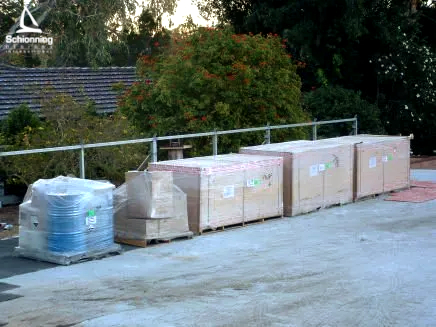
Our kits contain all of your basic materials to build your boat to a faired shell stage, ready for painting and fit-out. We have sail-away costing estimates available for all of our standard designs, and this will give you an accurate idea of the overall cost of your project. This costing varies depending on your level of finish, as you can imagine different options vary greatly in price.
Below is a quick glance at what your Schionning Kit will include and what each item is primarily used for, we hope this is helpful and if you should require more detailed information please don’t hesitate to contact our office.
What do I actually receive?
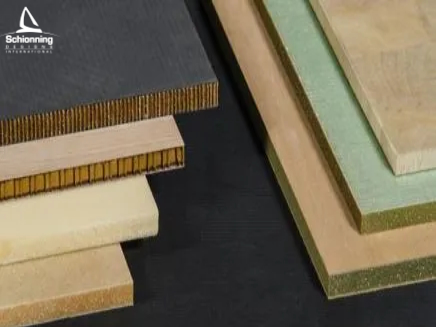
DUFLEX PRE-LAMINATED PANELS
DuFlex pre-laminated panels are the main and most important material used in our kits, predominantly in the flat panel designs, however they are used in Strip-planked designs also, though to a lesser extent. These panels are 2400mm x 1200mm and are CNC routed to speed up build time on our Wildernes X Series, as well as some of our power designs. For internal furniture, a paper honeycomb core is used instead of the end-grain balsa wood core that is used for main structural areas. The use of this is purely to save weight in the shell and therefore produce a faster, more responsive catamaran.

KINETIX LAMINATING RESIN & HARDENER

WEST SYSTEM EPOXY RESINS

FIBREGLASS TAPES (DOUBLE BIAS)
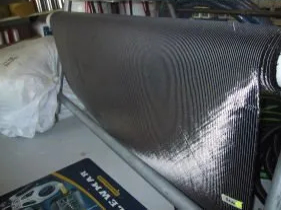
CARBON FIBRE CLOTH

FIBREGLASS CLOTH
The kit process, building your own boat can be a daunting prospect, however to demonstrate each step in the kit assembly process, we've created this guide for you to study. as you can see our kits are the ultimate in building efficiency and have been streamlined over 30+ years to ensure that you're on the water faster and with less effort., how does it all go together.
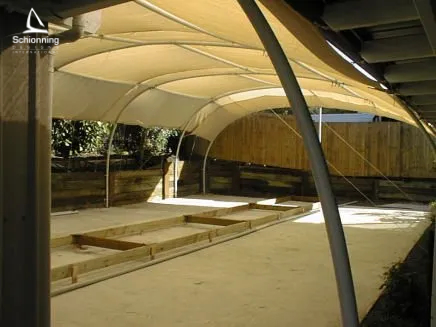
The first step to building your dream catamaran begins with a strongback – this is a square frame used to position the temporary frames that will be used to form the hull shape. This frame will be set up and must be square and accurate, a string or laser level can be used to achieve this.

The forebeam is now installed along with the striker attachment fitting, as shown above. The bridgedeck is installed shortly after and taped onto the bulkheads with webs installed, this now completes what is a quite stiff and strong platform to work on.

Now that the bridgedeck is in place, the forward webs and dash will be fitted. At this stage, all furniture and internal work begins, with the main panels left off for ease of access when working.
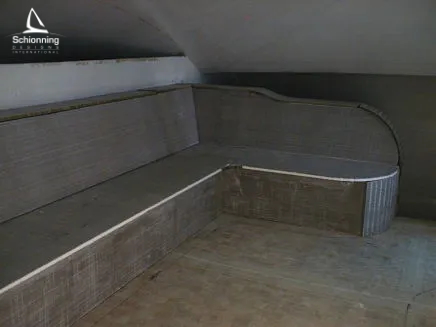
Material Choices
Schionning material choices, solutions that work best for catamarans & why, our designs are based on cored composite construction techniques using west system epoxy resin and knitted fabrics. but given the range of today's composite technologies, which solution works best for catamarans and why written by jeff schionning, selecting the correct materials, resin choices.

It also fully protects the boat against water absorption and it can not develop the dreaded Osmosis.
We choose ATL Composite’s resin systems for their superior quality, reliability and value for money.
Having worked closely with the ATL Composites team and their products for many years, we know we can stand by their material solutions, and rely on great service should something unexpected happen.

This may not seem important but when working with a material for an extended period of time, the small things make all the difference.
CORES Which One to Use?

- End-Grain Balsa – 150kg per cubic metre
- Superlight Balsa – 94kg per cubic metre
- Western Red Cedar – 360-380kg per cubic metre
- Foam – 80kg per cubic metre
BALSA END GRAIN (150 kg/cubic metre)
Balsa has very good values and we can produce a shell using a very light laminate. It will be very stiff and very resilient to fatigue.
It has exceptional qualities including very high compression strength, extremely good sheer capabilities and fantastic sheer stiffness.
Compressive strength is the resistance to collapsing when pressure is applied perpendicular to the surface as when pushing directly onto the material with the point of your finger. Balsa is far stronger than Foam (80kg/cubic metre) in compression.
Balsa is also very strong in shear. This is when the core sample is held flat between your hands, one hand slid one way and the other slid the opposite way, when the core tears through the middle the core has failed in sheer. The amount of stretch you feel before the core shears is shear stiffness. To compensate for sheer weakness the core is made thicker. So 13mm Balsa may be equal in sheer to 19mm Foam.
(80 to 200 kg/m³)
There are many boats sailing that are built from foam as it’s mechanical properties are good for boat building.
- Initially one would expect this cat shell to be lighter as it is ½ the weight of Balsa. We do have to compensate for its weaknesses and will then add to the reinforcement the reinforcement on the outside to spread that compression load over more core and need a triaxial type weave to compensate for the veneer content that runs fore and aft on the Durakore.
- Secondly, we need to increase the Core thickness to compensate for the shear value, usually neutralizing the weight advantage.
- We only use structural foam core that is closed-cell and cross-linked.
The end result using foam core amounts to a very similar total boat weight. Professional builders can achieve a good result but usually use vacuum bagging and very good molds to achieve this.
Secondary Issues
Balsa can absorb water. It needs extreme neglect to rot (very unusual). Water soaks along the end grain quickly. It travels very slowly across the grain. We use balsa under the waterline especially because of it’s high compression strength for beaching etc. any core type must be sealed. Damage to all cores results in the same sort of repair. Notice a damp spot remaining when drying out to anti-foul… simply grind back the surface glass exposing the core, dry it out and re-glass – it’s that easy.
Timber cores are cheaper than Foam in most cases.
A light, high tech cat returns a far better (often 2 – 3 times) re-sale than lower tech materials. Often saving $10,000 on materials initially, loses $200,000 on re-sale – a serious reality.
Our boats can be built using Balsa, Foam or Western Red Cedar. Combine strength, stiffness, lightness and cost, with ease of use – it just makes good sense!

Cat 22 Boat Plans (CT22)
- $ 325.00 – $ 350.00
- [CT22] Boat plans for a 22' modern catamaran for twin outboards.
- Select options
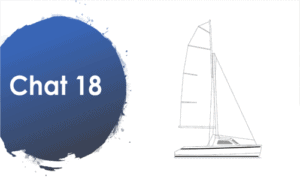
Chat 18 Boat Plans (CH18)
- $ 140.00
- Chat 18 by Richard Woods
- Add to cart
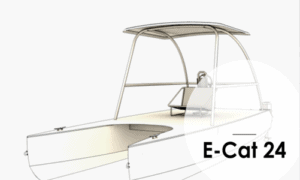
E-Cat 24 Boat Plans (EC24)
- $ 140.00 – $ 165.00
- [EC24] The E-Cat is an Economical, Efficient, and Electric Capable Catamaran.
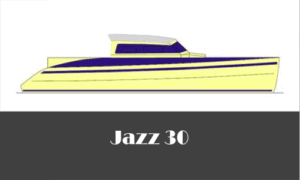
Jazz 30 Boat Plans (J30)
- $ 1,215.00 – $ 1,240.00
- Fishing Catamaran 30'
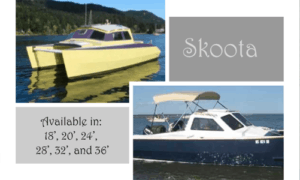
Skoota 18 Boat Plans (SK18)
- $ 130.00
- The Skoota 18 is a simple to build and trail power catamaran.

Skoota 20 Boat Plans (SK20)
- $ 385.00
- Skoota 20, a folding power catamaran.

Skoota 24 Boat Plans (SK24)
- $ 480.00
- 24' power catamaran, folding

Skoota 28 Boat Plans (SK28)
- $ 1,275.00
- 28' power catamaran with cabin, disassemble for towing.

Skoota 32 Boat Plans (SK32)
- $ 1,530.00
- 32' power catamaran with cabin.

Skoota 36 Boat Plans (SK36)
- $ 2,231.00
- 36' power catamaran with cabin.

Privacy Overview
Did You Know That We Offer Contract to Closing Services? Click Here to Find Out More.
Need Marine Financing? Apply Here With Our Partner, First Approval Source
- Catamaran Interviews
- Catamaran Reviews
- Buying Advice
- Selling Advice
- Woods Design Advice
- Americat 3014
- Aquila 44 Yacht
- Balance 526
- Bali 40 Catspace
- Beneteau Blue II
- Broadblue 346
- Broadblue 38 Prestige
- Broadblue 385
- Broadblue 435
- Broadblue 46
- Catalac 10M
- Catalac 11M
- Catalac 12M
- Catalac 900
- Catana 42 S
- Chris White 48 Voyager
- Chris White 55
- Corsair F28 R
- De Villiers
- Dolphin 460
- Endeavour 30
- Endeavour 35 Victory
- Endeavour 36
- Endeavour 44
- Endeavour 44 TrawlerCat
- Fortuna 36 Island Spirit
- Fortuna 401 Island Spirit
- FP 32 Maldives
- FP 35 Tobago
- FP 37 Antigua
- FP 38 Athena
- FP 39 Fidji
- FP 40 Lavezzi
- FP 40 Lucia
- FP 40 Summerland MY
- FP 41 Lipari
- FP 42 Astrea
- FP 42 Venezia
- FP 43 Belize
- FP 44 Helia
- FP 44 Orana
- FP 46 Bahia
- FP 46 Casamance
- FP 48 Salina
- FP 56 Marquises
- FP 57 Sanya
- FP 60 Eleuthera
- FP Saona 47
- Gemini 3000
- Gemini 3200
- Gemini 3400
- Grainger 420 Mystery Cove
- Hirondelle 7M
- Lagoon 37 TPI
- Lagoon 42 TPI
- Lagoon 43 PC
- Leopard 39 PowerCat
- Leopard 45 Classic
- Leopard 47 PowerCat
- Leopard 51 PowerCat
- Leopard 53 PowerCat
- Maine Cat 30
- Maine Cat 41
- Matrix 450 Vision
- Matrix 760 Silhouette
- Maverick 400
- Maverick 420
- Maverick 440
- Nautitech 40
- Nautitech 442
- Nautitech 46 Open
- Nautitech 47
- Outremer 40
- Outremer 45
- Outremer 50 Standard
- Outremer 55
- Privilege 37
- Privilege 39
- Privilege 42
- Privilege 43
- Privilege 435
- Privilege 45
- Privilege 465
- Privilege 48 Transcat
- Privilege 482
- Privilege Serie 5
- Prout 31 Quest
- Prout 33 Quest
- Prout 34 Event
- Prout 35 Snowgoose
- Prout 37 Snowgoose
- Prout 37 Snowgoose Elite
- Prout 38 Manta
- Prout 39 Escale
- Royal Cape 45
- Royal Cape 530 Majestic
- Royal Cape Majestic 500
- Sailcraft 30 Iroquois
- Sailcraft 32 Comanche
- Sailcraft 35 Cherokee
- Sailcraft 41 Apache
- Sailcraft 44 Apache
- Wildcat 350
- Seawind 1000
- Seawind 1160
- Seawind 1200
- Seawind 1260
- Seawind 1600
- Solaris 36 Sunrise
- Solaris 36 Sunstar
- St Francis 44
- St Francis 48
- St Francis 50
- Stealth 11.8
- Heavenly Twins 26
- Ocean Twins 38
- Voyage 380 Maxim
- Voyage 400 Norseman
- Voyage 430 Norseman
- Voyage 450 Cabriolet
- Voyage 47 Mayotte
- Wharram 38 Tiki
- AMI 320 Renaissance
- Woods 22 Wizard
- Woods 35 Banshee
- Woods 35 Flica
- Woods 36 Scylla
- Woods 36 Vardo
- Woods 38 Transit
- Woods 40 Meander
- Xquisite X5
- Xquisite X5+
Catamaran Hull Design
- Post author By Rick
- Post date June 29, 2010
- 2 Comments on Catamaran Hull Design

Part 1: Notes from Richard Woods
Since the America’s Cup experimented with going multihull, there’s been a lot of interest in catamaran performance and the catamaran hull designs that define performance. Many guys are investigating whether to buy a catamaran or design and build their dream boat. Let it be said here that building a large catamaran is not for the faint of heart. People begin building 100s of boats a year, yet few are ever completed, as life always seems to have a way of interfering with a good boat build.
Never the less, since the rest of this website is about selecting and buying a boat , it only seems fair to have at least one webpage that covers catamaran design. This page contains notes on boat hull design goals and an accompanying page from Terho Halme has mathematical formulas used in actual catamaran hull design. It has become a popular research stop and an important reference to the catamaran design community.
The content of this page was reproduced from the maestro of Catamaran designs, renown British naval architect, Richard Woods, who not only designs catamarans, he sails them across oceans…. repeatedly. He has a lot to say on the subject of catamaran hull design.
“…When it’ all said and done, the performance of a sailing catamaran is dependent on three primary specs: length, sail area and weight. If the boat is longer it generally means it’ a faster boat. If she has more sail area, it means she’ a faster boat and if she’ light it means she’ a faster boat. Of course, there are limits: Too much sail area capsizes the boat in brisk winds. If the boat is designed too light, she will not take any kind of punishment. Too slim a hull design and the boat becomes a large Hobie Cat capable of only carrying your lunch. Of course, too long and large and you’d have to be Bill Gates to afford one. Then there are lot of additional and very important factors like underwater hull shape, aspect ratios of boards and sails, wet deck clearance, rotating or fixed rigging and so on….” Richard Woods
All Catamarans are not equal, but all sailboats have two things in common: They travel on water and they’re wind powered, so the Catamaran design equations in the 2nd part should apply to every catamaran from a heavy cruising Cat to a true ocean racer.
Richard Wood’s comments on catamaran design:
We all know that multihulls can be made faster by making them longer or lighter or by adding more sail. Those factors are the most important and why they are used as the basis of most rating rules. However using just those figures is a bit like determining a cars performance just by its hp and curbside weight. It would also imply that a Tornado would sail as fast forwards as backwards (OK, I know I just wrote that a Catalac went faster backwards than forwards)
So what next?? Weight and length can be combined into the Slenderness Ratio (SLR). But since most multihulls have similar Depth/WL beam ratios you can pretty much say the SLR equates to the LWL/BWL ratio. Typically this will be 8-10:1 for a slow cruising catamaran (or the main hull of most trimarans), 12-14:1 for a performance cruiser and 20:1 for an extreme racer.
So by and large faster boats have finer hulls. But the wetted surface area (WSA) increases proportionately as fineness increases (for a given displacement the half orange shape gives the least WSA) so fine hulls tend to be slower in low wind speeds.
The most important catamaran design hull shape factor, is the Prismatic Coefficient (Cp). This is a measure of the fullness of the ends of the hull. Instinctively you might think that fine ends would be faster as they would “cut through the water better”. But in fact you want a high Cp for high speeds. However everything is interrelated. If you have fine hulls you can use a lower Cp. Most monohulls have a Cp of 0.55- 0.57. And that is about right for displacement speeds.
However the key to Catamaran design is you need a higher Cp if you want to sail fast. So a multihull should be at least 0.61 and a heavy displacement multihull a bit higher still. It is difficult to get much over 0.67 without a very distorted hull shape or one with excessive WSA. So all multihulls should have a Cp between 0.61 and 0.65. None of this is very special or new. It has been well known by naval architects for at least 50 years.
There are various ways of achieving a high Cp. You could fit bulb bows (as Lock Crowther did). Note this bow is a bit different from those seen on ships (which work at very specific hull speeds – which are very low for their LOA). But one problem with them is that these tend to slam in a seaway.
Another way is to have a very wide planing aft section. But that can increase WSA and leads to other problems I’ll mention in a minute. Finally you can flatten out the hull rocker (the keel shape seen from the side) and add a bustle aft. That is the approach I use, in part because that adds displacement aft, just where it is most needed.
I agree that a high Cp increases drag at low speeds. But at speeds over hull speed drag decreases dramatically on a high Cp boat relative to one with a low Cp. With the correct Cp drag can be reduced by over 10%. In other words you will go 10% faster (and that is a lot!) in the same wind and with the same sails as a boat with a unfavorable Cp. In light winds it is easy to overcome the extra drag because you have lots of stability and so can fly extra light weather sails.
The time you really need a high Cp boat is when beating to windward in a big sea. Then you don’t have the stability and really want to get to your destination fast. At least I do, I don’t mind slowly drifting along in a calm. But I hate “windward bashing”
But when you sail to windward the boat pitches. The sea isn’t like a test tank or a computer program. And here I agree with Evan. Immersed transoms will slow you down (that is why I use a narrower transom than most designers).
I also agree with Evan (and why not, he knows more about Volvo 60 design than nearly anyone else on the planet) in that I don’t think you should compare a catamaran hull to a monohull, even a racing one. Why chose a Volvo 60/Vendee boat with an immersed transom? Why not chose a 60ft Americas Cup boat with a narrow out of the water transom??
To be honest I haven’t use Michelet so cannot really comment. But I have tested model catamarans in a big test tank and I know how inaccurate tank test results can be. I cannot believe that a computer program will be better.
It would be easy to prove one way or the other though. A catamaran hull is much like a frigate hull (similar SLR, L/B ratios and Froude numbers) and there is plenty of data available for those. There is also a lot of data for the round bilge narrow non planing motorboats popular in the 1930’-50’s which again are similar to a single multihull hull.
One of the key findings I discovered with my tank test work was just how great the drag was due to wave interference between the hulls. Even a catamaran with a modern wide hull spacing had a drag increase of up to 20 % when compared to hulls at infinite spacing. One reason why just flying a hull is fast (the Cp increases when you do as well, which also helps). So you cannot just double the drag of a single hull and expect to get accurate results. And any speed prediction formula must include a windage factor if it is to give meaningful results.About 25 years ago we sailed two identical 24ft Striders next to each other. They were the same speed. Then we moved the crew of one boat to the bow. That boat IMMEDIATELY went ½ knot faster. That is why I now arrange the deck layout of my racing boats so that the crew can stay in front of the mast at all times, even when tacking or using the spinnaker.
I once raced against a bridge deck cabin catamaran whose skipper kept the 5 crew on the forward netting beam the whole race. He won.
Richard Woods of Woods Designs www.sailingcatamarans.com
- Tags Buying Advice , Catamaran Designers

Owner of a Catalac 8M and Catamaransite webmaster.
2 replies on “Catamaran Hull Design”
I totally agree with what you say. But Uli only talk sailing catamarans.
If only solar power. You need the very best. As limited watts. Hp.
The closer to 1-20 the better.
Closing the hulls to fit in cheaper marina berth. ?
You say not too close. But is that for sailing only.
Any comment is greatly appreciated
Kind regards Jeppe
Superb article
Leave a Reply Cancel reply
Your email address will not be published. Required fields are marked *
Save my name, email, and website in this browser for the next time I comment.
TRI-STAR 24
Tri-star 25.
TRI-STAR 25 Study Plans $40.00 Add To Cart TRI-STAR 25 Plans $550.00 Add To Cart
TRI-STAR 26 MT
Tri-star 27-9, tri-star 31, tri-star 31 cm.
TRI-STAR 31CM Study Plans $40.00 Add To Cart TRI-STAR 31CM Plans $600.00 Add To Cart
TRI-STAR 32 XR
TRI-STAR 32XR Study Plans $40.00 Add To Cart TRI-STAR 32XR Plans $600.00 Add To Cart
TRI-STAR 35
TRI-STAR 35 Study Plans $ 40.00 Add To Cart TRI-STAR 35 Plans $ 650.00 Add To Cart
TRI-STAR 35 XR
TRI-STAR 35 XR Study Plans $40.00 Add To Cart TRI-STAR 35 XR Plans $700.00 Add To Cart
TRI-STAR 36
Tri-star 37 xrc.
TRI-STAR 37 XRC Study Plans $ 40.00 Add To Cart TRI-STAR 37 XRC Plans $ 800.00 Add To Cart
TRI-STAR 38 / 39
Tri-star 40 lw, tri-star 42, tri-star 43 xrc, tri-star 43 mc, tri-star 44 lw, tri-star 45, tri-star 49, tri-star 50, tri-star 51 mc, tri-star 54, tri-star 60 / 63, tri-star 65, tri-star 80, tri-star 104.
Email us for availability and prices
- GRAINGER DESIGNS
Raku Sailing Catamarans

From 32' to 66' LOA . We've designed these elegant high performance cruising cats for fast efficient construction

SENSORI POWER CATS

At 78' LOA with luxury accommodation for 12 guests in 6 cabins with en-suites, this is the premier model in the Sensori Power Cat Range.

Above; 42' custom trimaran "Venom" See the Trimaran Pages here
LATEST NEWS
Splash down for raku 44#1.

Raku 44#1 launched in Brazil. See more images in the build gallery here
RAKU 44#2 UNDER CONSTRUCTION AT WAARSCHIP

RAKU 44 #2 Features fin keels and we're building a gallery to follow the construction.
Join the Newsletter

- Scroll to top
Home | About Us | Services | Designs | News | Links | Contact Us | Site Map
Legal Disclaimer: copyright © 2004-2005 Bloomfield Innovation Pty Ltd
- Aluminum Boat Plans
Aluminum Catamarans
SPECMAR Aluminum Catamaran Hulls are either symmetrical or asymmetrical in design. A symmetrical hull consists of two basic V-bottom hull structures. Asymmetrical hulls are basically a monohaul craft split down the middle and spread apart. A fOIL assisted cat has a lifting foil between the two hulls to increase performance. One of the advantages of our aluminum catamaran is high initial stability.
Prices shown on this website are for plans and for a one time use of CAD cutting files.

Log in or Sign up
You are using an out of date browser. It may not display this or other websites correctly. You should upgrade or use an alternative browser .
Open Source 13-15m Catamaran Plans
Discussion in ' Projects & Proposals ' started by archie1492 , Jan 3, 2018 .
archie1492 Junior Member
Dear all, I want to create a detailed building information model for a 13 - 15 meter catamaran that is capable of being CNC cut and assembled. I need some help finding plans I can use as a basis of design. Specifically, I need the hull profile information. Section cuts through the hull will give me the ideal contours for a boat of this size. Can someone help? After weeks of searching, I still cannot find these online. For now, this is merely an exercise in my 3d modeling capability. I'd like to share my drawing work with the forum if I can get some assistance to start off. There are future possibilities I am also considering. I'm an experienced Architect & construction designer with a strong background in computer aided design. Once I've modeled the boat in 3d, I would like to flatten the various parts and create plans for the individual boat parts to be CNC cut. I would like to build a small scale model first (1:2o or perhaps 1:10) with the ultimate goal of building the boat full scale.
TANSL Senior Member
This is a very simple catamaran which, if you are interested, I can give you a lot of information. It is not a spectacular boat but it can help you in your first steps with boats. LOA = 16 m, Lbp = 14.6 m
Thanks I really appreciate it. The hull lines for the motor cat you've provided are not quite what i'm looking for. I'm specifically looking for the hull lines for a 14m catamaran sail boat. I guess there is some standard for these contours especially the area below the waterline. Check the attached document as well if anyone is interested in this.
Attached Files:
catdimension.pdf
I'm sorry, you never specified that it was a sailing catamaran. I thought that to carry out your purposes, " For now, this is merely an exercise in my 3d modeling capability ", any model was valid. Apparently, you have different purposes than, in addition to, to practice with 3D models. The better you clarify what you are really looking for, the better someone can help you.
Hi all, Here's an example of what kind of information I need to get started. Optimising Hull Lines for Performance https://www.graingerdesigns.net/the-lab/optimising-hull-lines-for-performance/ The boat shown here is a 8.5m cat sailboat. I'm looking for something a bit larger in the 14m range. Also, the images only show one of the hull profiles. I'd like profile lines for the entire boat. I will post some other images I've found online showing profile lines for smaller boats. I still cannot find any 14m hull lines. Can anyone help?
grainger_1488019480.jpg
Grainger_1488019410.jpg, grainger_1488019333.jpg, grainger_1488019265.jpg, grainger_1488019219.jpg.
Here are some other hull lines I've found online. Hope this is useful to anyone else looking for this information. Thanks!
Evergreen Lines small.jpg
Hull-lines.jpg, shark-20.jpg.
You could take any of those boats and scaleb the lines to get the desired length. Since it is only a 3D modeling exercise, you do not have to worry about anything else. You could even make a mix of 2 or 3 of those models to get the one you are looking for.
Thanks Tansl, I'd like to make the boat drawings accurate for the 14m size. Perhaps one day I will develop this into something worth building full scale. The more accurate I can draw the boat, the more I will learn about the boat design.
Maybe it does not look like it but I would like to help you. If you do not find what you want on the Internet I could draw a lines plan, strictly following your instructions, which would help you to make the 3D model. Or, if you find something similar on the internet I can adapt it to your needs and fill in the information that you indicate you need for your work. I insist that starting from the shapes of a 10 m boat you can get the shapes of a boat of 14 m, with total accuracy.
Dolfiman Senior Member
archie1492 said: ↑ I'd like to make the boat drawings accurate for the 14m size. Perhaps one day I will develop this into something worth building full scale. The more accurate I can draw the boat, the more I will learn about the boat design. Click to expand...
Cata 14m with Gene-Hull UE Catamaran 2.3_2018 01 15.ods
Gene-Hull Catamaran 2.3 User Guide_2018 01 16.pdf
Hull for cata 14m with Gene-Hull UE Catamaran 2.3_2018 01 16.pdf
Dolfiman, thanks so much! This is exactly what I was looking for. It's very interesting and probably a bit over my head at this point. I think this should work for modeling the basic hull shape. For the bridge deck and all of the stuff above the hull I can model this with a bit more creativity. Although, I'd like to learn more about understanding the center of gravity for the boat and the proper location of the mast. Are there any rules of thumb about this? Thanks again!
archie1492 said: ↑ I think this should work for modeling the basic hull shape. Click to expand...
Cata 14m V2 with Gene-Hull UE Catamaran 2.3_2018 01 15.ods
In complement to illustrate this first approach, my good friend Alain did some 3D views here attached of the hull V2 version with Multisurf (using fit for purpose ouput data in section 5. of the above file). To inspire you , some other examples of cata, more sport/day sailer oriented than the Saona 47 : - R/P 45 (Reichel-Pugh) : multihull http://reichel-pugh.com/tag/multihull/ - Dazcat 1295 : in this video, from 1:45 the launch, you can see the hulls from various angles https://www.youtube.com/watch?v=0BZF4Udda5E - SIG 45 (VPLP design) : from 1:20 you can see the winward hull fully lifted
dean 1962 New Member
archie1492 said: ↑ Dear all, I want to create a detailed building information model for a 13 - 15 meter catamaran that is capable of being CNC cut and assembled. I need some help finding plans I can use as a basis of design. Specifically, I need the hull profile information. Section cuts through the hull will give me the ideal contours for a boat of this size. Can someone help? After weeks of searching, I still cannot find these online. For now, this is merely an exercise in my 3d modeling capability. I'd like to share my drawing work with the forum if I can get some assistance to start off. There are future possibilities I am also considering. I'm an experienced Architect & construction designer with a strong background in computer aided design. Once I've modeled the boat in 3d, I would like to flatten the various parts and create plans for the individual boat parts to be CNC cut. I would like to build a small scale model first (1:2o or perhaps 1:10) with the ultimate goal of building the boat full scale. Click to expand...
- Advertisement:
Archie, I have been looking to do the same thing. Where are you at on the project? Very interested in hearing all about it. Thanks.
The Open Trawler Project!
- No, create an account now.
- Yes, my password is:
- Forgot your password?


James Wharram Designs
Search Our Site
- Self Build Boats
- Professionally Built Boats
- Choosing a Boat
- How We Design
- Photo Gallery
- Video Gallery
- Articles & Blogs
- Wharram World
Tiki Designs
Coastal trekkers to long term live aboards.
From the car trailable Tiki 21 - winner of the 1982 Cruising World Design Competition, to the Tiki 46, a spacious ocean cruiser or charter boat, the TIKI range offers car trailable coastal trekkers to long term live aboards. Although a Tiki 21, a very popular coastal trek design, has circumnavigated, we would not recommend this for everyone! A number of Tiki 26s have also made ocean crossings, but again this is only for the experienced sailor. The larger TIKI designs of 30ft and over are craft capable of longer voyages and ocean crossings. They are designed to be less costly to build by using appropriate wood/epoxy technology and by eliminating, wherever possible, expensive metal fittings common to modern yacht design.
On the larger TIKIs the 'Deckpod' offers sheltered steering and the 'Stern Ramp' provides easy access to and from the water. The TIKIs are boats you can work and live on. The Wharram approach goes beyond simple boat design - the concept of 'Flexispace' puts emphasis on not just the physical living area, but also the 'mind space' of those on board.
About Tiki Building Plans
The TIKI Building Plans, designed from the early 1980s till the present, represent a new phase in our presentation of building drawings. The first small Tikis were all built in stitch-and-glue ply and epoxy. This needed a different way of guiding the builder through the build process, as the boats are built shell first, instead of frame first. All TIKI building Plans are very detailed, which some builders have described as a course in boat building . They supply a building sequence as a book of large 3D drawings of all the plywood parts and overall construction details, drawn to scale. Some parts are given full size, to be copied on the plywood.
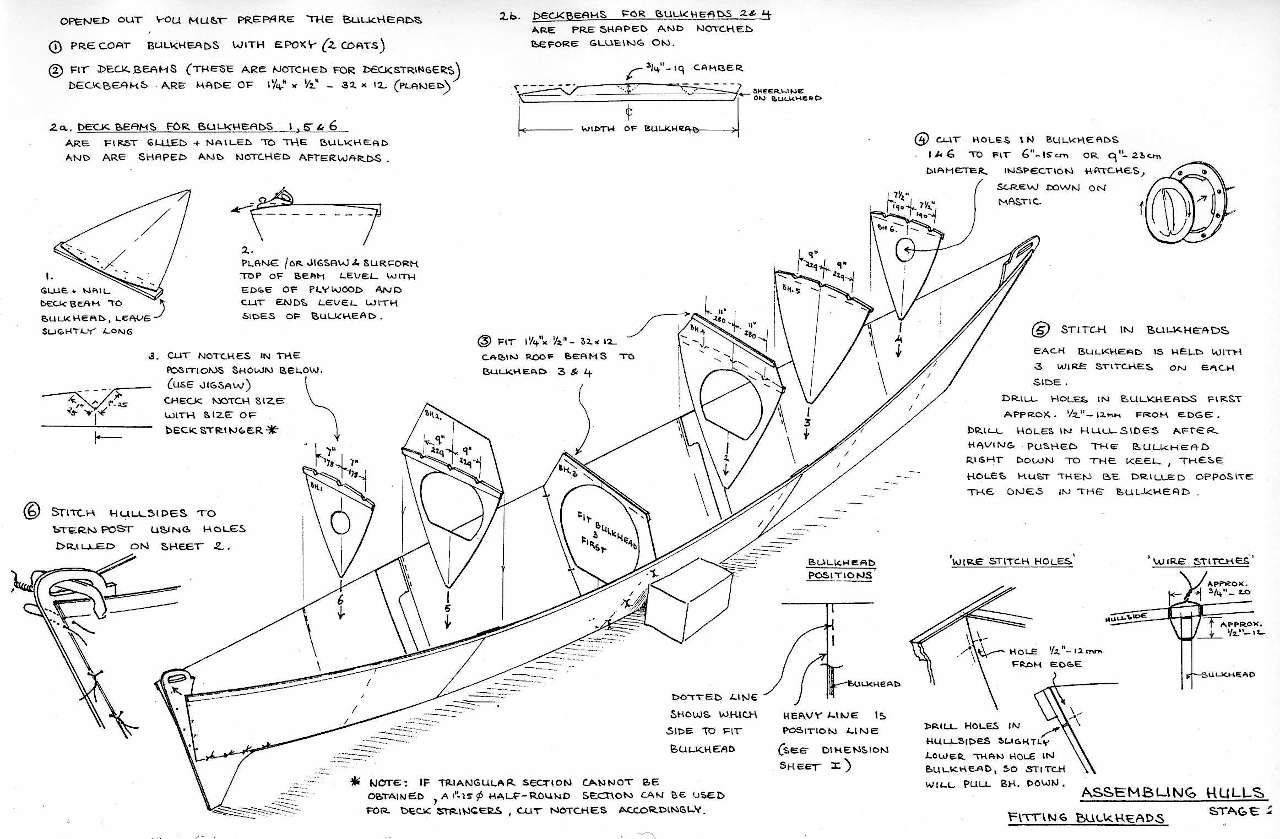
These scale drawings are accompanied by an A3 size sketchbook, which leads the builder step by step through the build with beautiful detailed sketches and numbered sequence of construction. They are all hand drawn by Hanneke, who has years of hands-on experience of building and designing Wharram catamarans. All our practical expertise, with a focus on keeping things simple, has gone into these drawings. These sketchbooks have made it possible for people with no boatbuilding experience to build a beautiful boat .
See information about building costs .

The Tiki 21 was designed in 1981 as an easy to build Coastal Trek catamaran, using new epoxy/glass stitch & glue techniques. In 1982 the new and then quite radical Tiki 21 was given first prize by Cruising World magazine (USA) in their design competition for a 'Trailable Gunkholer'. Since then nearly 1000 Tiki 21 Plans have been sold (2015).
In 1991-97 Rory McDougall sailed his self-built Tiki 21 'Cooking Fat' around the world, sometimes alone, sometimes with a companion. She was, and still is, the smallest catamaran to have circumnavigated . In 2010 Rory entered 'Cooking Fat' in the Jester Challenge (single handed 'race' across the Atlantic for small boats - under 30ft) and came into Newport, Rhode Island a close second after 34 days.
The Tiki 21 has stayed popular as a simple, easy to trail Coastal Trekker all over the world. Her unique soft Wharram Wingsail Rig has been used on all subsequent Tiki and other Wharram designs (30ft - 65ft) and is very popular with the owners of these boats.
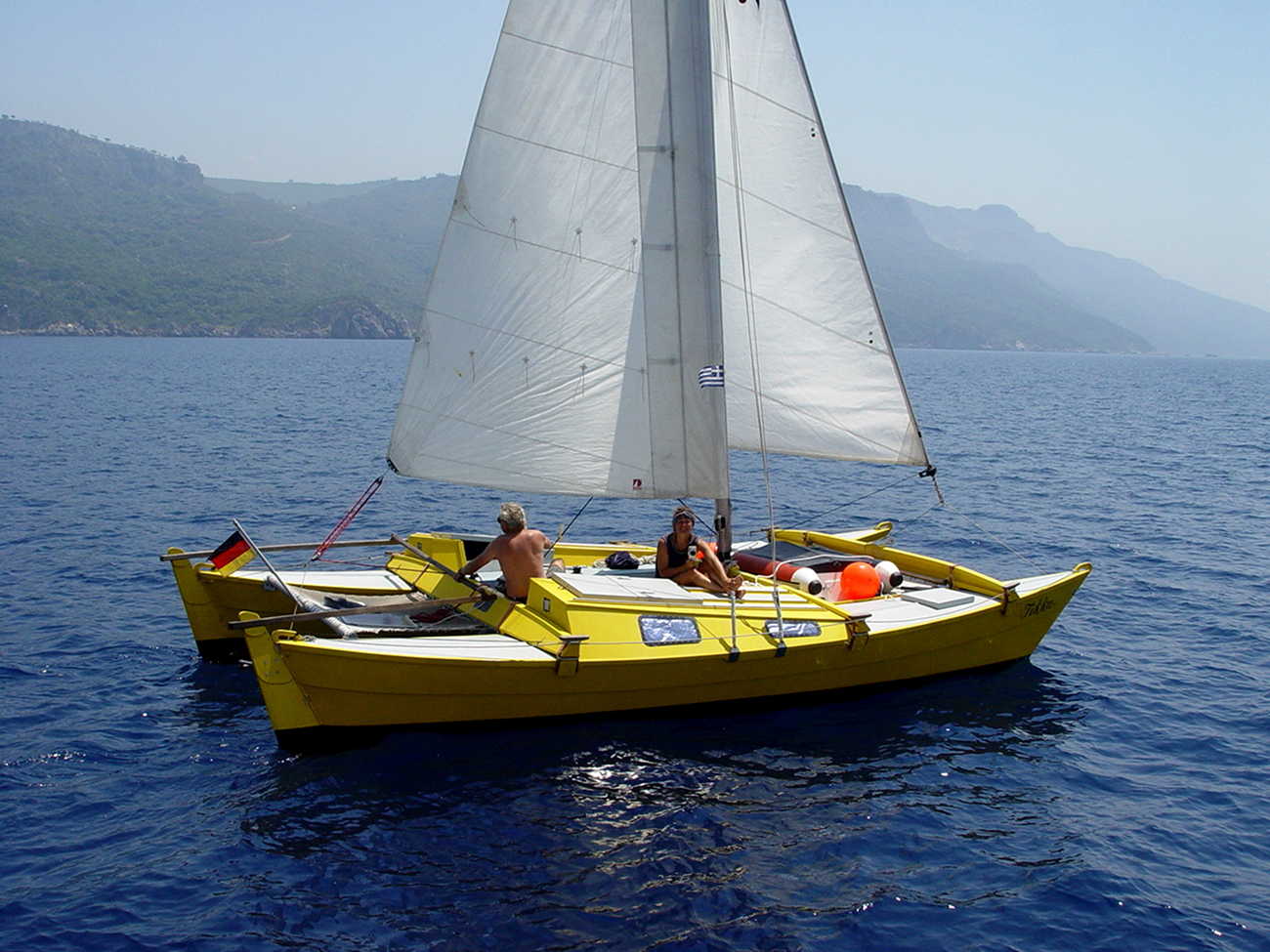
The Tiki 26 was designed by popular demand soon after the Tiki 21, for people who wanted to do more serious Coastal cruising. Her ocean going abilities have since been proven in various ocean crossings .
The Tiki 26 can be trailed and is easily beached, to step off in ankle deep water. Sleeps two in the hulls, leaving room for small galley and chart table, but accommodation can be increased with a decktent, giving space for a double bunk.
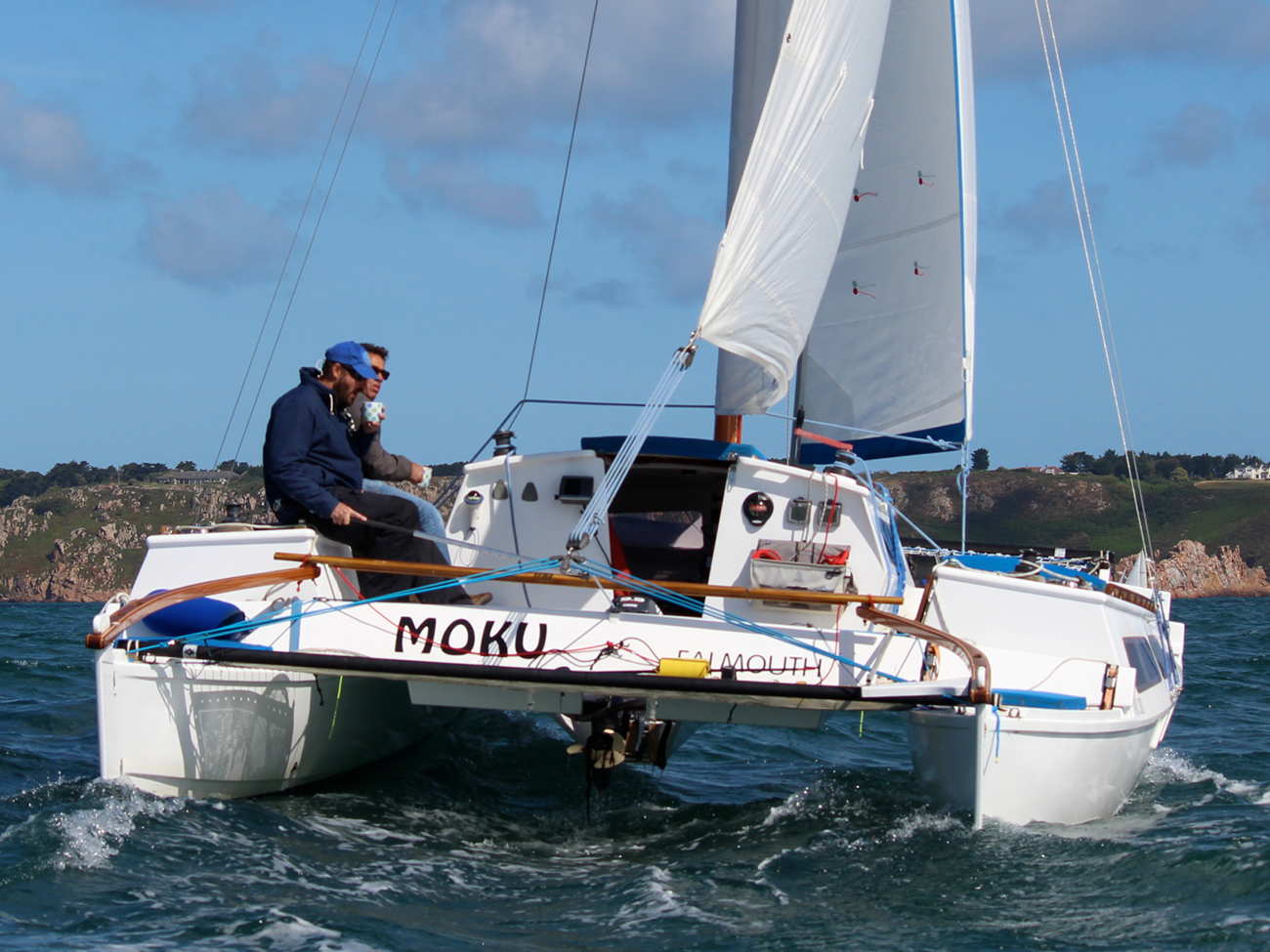
The ideal low budget self build ocean cruiser. With a sleeping capacity of 6 (two doubles in the hulls) and spacious level deck area, TIKI 30 makes an excellent low cost charter boat.
It is our largest self-build boat design that is capable of being towed behind a vehicle . This means keeping the build weight down, and simple but adequate accommodation. This is not a high cost, luxury boat, but an elegant, versatile, 'double canoe' sailing boat, providing basic comfort for 'Living on the Sea'.
An optional deck pod with double berth and/or navigation station is available. This pod replaces the standard open cockpit.
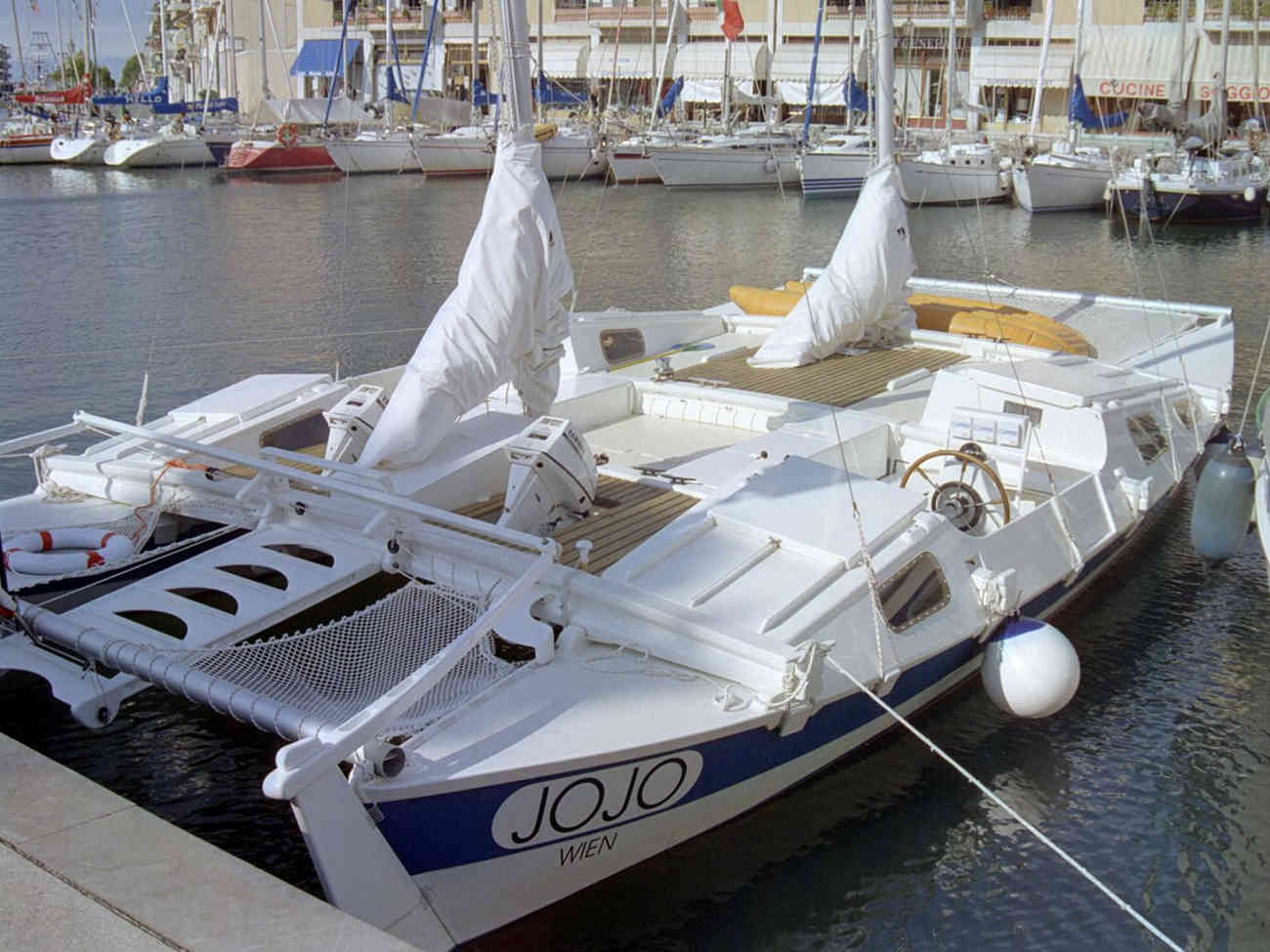
A traveller/workboat with ramp access at stern. She has open hull cockpits with removable tough awning covers, ideal for fishing . For workboat use she has a Wingsail schooner rig, with two short masts. Can sleep 4-6.
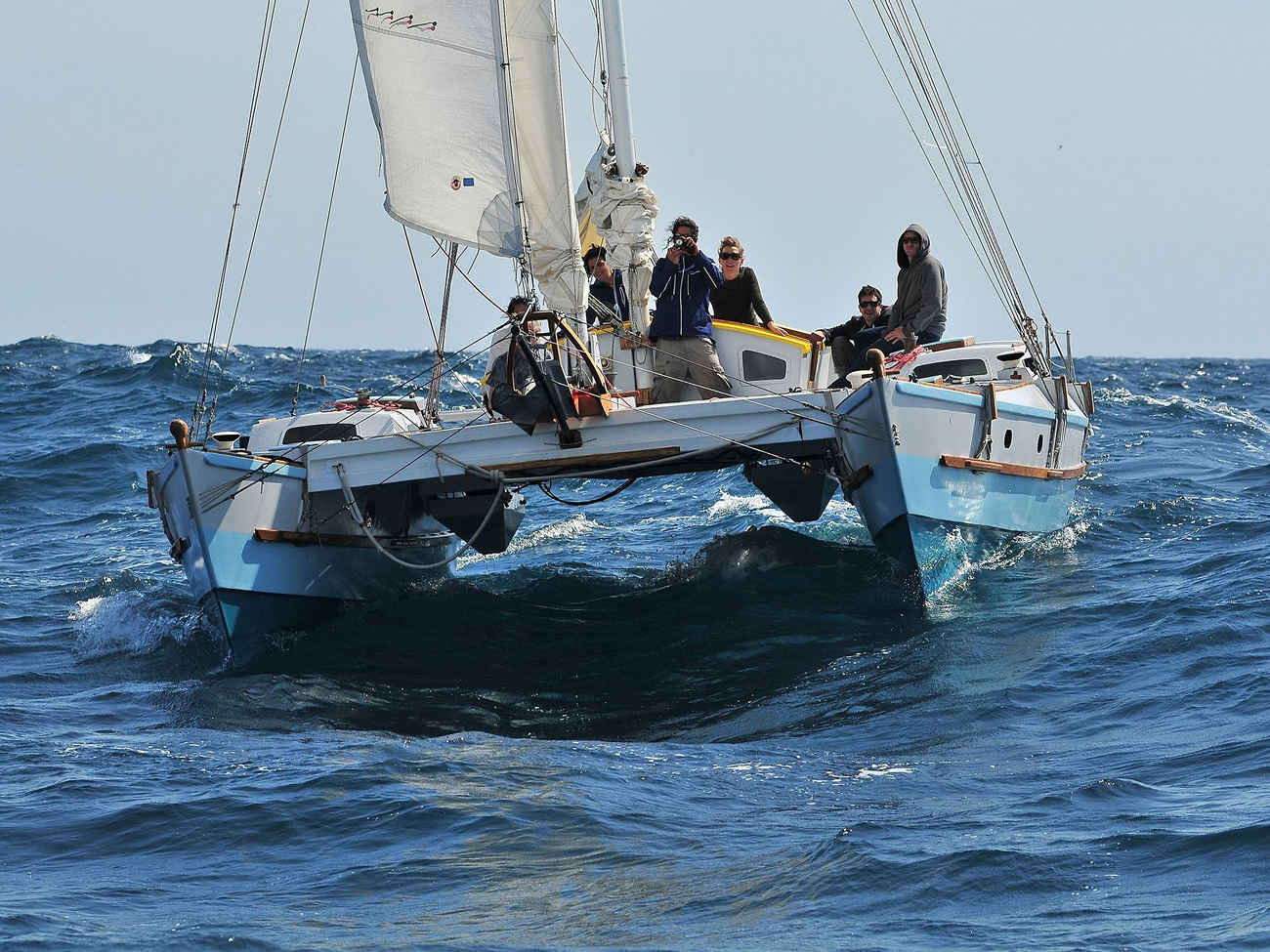
The TIKI 38 was designed using all the latest Wharram construction innovations. Her deckpod gives good shelter when ocean cruising and includes a bunk for the off-watch crew. Forward of the deckpod is 26 Sqr metres of safe, usable deck space. An excellent family cruising boat .
The TIKI 38 interior comprises two double cabins, two single cabins, galley, navigation station and toilet/shower, as well as good storage areas in bow and stern.

The Tiki 46 is a boat designed for Blue Water sailing , with live aboard space for a crew of up to 10. She also makes an excellent charter vessel with 4 private double cabins and an extra double in the deckpod. Plenty of safe deck space and slim hulls for easy, fast sailing, not requiring huge sail area to get speed.
Anne and Neville Clement write logs about their voyages on self-built Tiki 46 'Peace IV'.
Questions about Tiki designs? Contact us:

Our Cats Love the Water!
Catamaran Cruisers Houseboats

A Catamaran Cruisers Houseboat Floorplan for Every Need

8x22 Scat Cat
Catamaran Cruisers introduces the 8'x22' Scat Cat. The Scat Cat is a smaller verison of the Party Cat Deck Boat and features our classic multi-chambered fiberglass hulls with deluxe seating.
This boat is great for getting into those tight secluded areas to anchor and enjoy the day! Call to order yours today for Fun & Excitement for the summer and YEARS TO COME!!

8x26 Party Cat Deck Boat
With hundreds sold nationwide, Catamaran Cruisers reintroduces the 8'x26' Party Cat deck boat. The Party Cat features our classic multi-chambered fiberglass hulls with a range of options to choose from to make this cost efficient pontoon boat what you need it to be.
Call to order yours today for Fun & Excitement for the summer and YEARS TO COME!! Need a bigger pontoon boat? Check out our 12x30 Pontoon Beast!!!

12x30 "The Pontoon Beast"
If you are looking to triple your rental income or even have a pontoon boat large enough to fit the whole family, this is the perfect boat for you!! With standard 60 hp Yamaha 4 Stroke motor, all aluminum rails, changing room, top sun deck with wet water slide off back, this boat is ready to go!!!!

8x31 Lil' Hobo Trailerable
The newly designed 8'x31' Lil' Hobo trailerable is truly a model of efficiency. Famous for its 2-for-1 value, it trailers as an RV to your favorite campsite and cruises equally well to a secluded cove for your next houseboat adventure. For more than 25 years the Lil' Hobo continues as one of Catamaran Cruisers most popular models.

Catamaran Cruiser 1035
With a comfortable 20 foot cabin and more than 300 square feet of outside deck space, the 10'x35' Catamaran Cruiser offers a very practical floorplan for those wanting more room than the 8' wide model. With many of the same amentities as our 12' wide one and two bedroom models, the 10'x35' was recognized at the Louisville Houseboat Expo for its nicely equipped affordability.

Catamaran Cruiser 1239

Catamaran Cruiser 1242 and 1245
Whether navigating the unsurpassed waterways of the USA or cruising in a tropical paradise, Catamaran Cruisers has a 12' wide floorplan for you. Available in a 12'x42' one stateroom model or a 12'x45' with two staterooms, exterior deck space is abundant at almost 500 square feet. Either plan is a comfortable and economical alternative to the smaller 10' wide and larger 14' wide models. See the Catamaran Cruisers 12'x45' showboat featured in Houseboat Magazine.

Catamaran Cruiser 1450 and 1458
For the ultimate in cruising, Catamaran Cruisers offers the spacious 14'x50' and 14'x58'. Either model will accommodate the largest family with room to spare. Full size kitchen galley and residential baths will make you feel right at home. Optional fiberglass stairs allow for fun in the sun topside on a full size one piece fiberglass deck! Non skid fiberglass deck surfaces allow for fun and safety at the same time. Catamaran Cruisers' 14' wides are comparably priced with other manufactures' smaller 10' modelsand 12' models.

Water Condo", "Floating Cottage", "Cabin on the Water" are typical descriptions of Catamaran Cruisers' newest houseboat concept. With the comforts of a cozy cottage and the mobility of a houseboat, the Aqua Lodge is perfect for just sitting at the marina or cruising out to your favorite quiet cove. Thoughtfully designed and beautifully finished inside and out the Aqua Lodge features a wood-beamed lofted ceiling, a fully appointed galley, and a full bath with residential sized fixtures......

Dual Stateroom Aqua Lodge
Customers continually report the single stateroom Aqua Lodge to be a great product for Casual Boating, Live-A-Boards and Rental units. We have had many requests however for a dual stateroom model gaining additional sleeping capacity for guests while also increasing opportunities for additional revenue in rental applications. Catamaran Cruisers has reacted too many consumer requests over 33 years through total “in-house” manufacturing......

Launch & Live Series
Introducing a "Floating Condo" Concept with the Launch & Live Series.
The Unique "Floating Apartment". Everything is included in the price of the Launch & Live Series for affordable and enjoyable "On the water" living. These stationary boats are great for private ponds or lakes as a guest house and perfect for liveaboard communities. This would be a good investment in a college town for student housing.......

Bernd Kohler
- Plans & Kits
- Plans by designer

- Qty in Cart
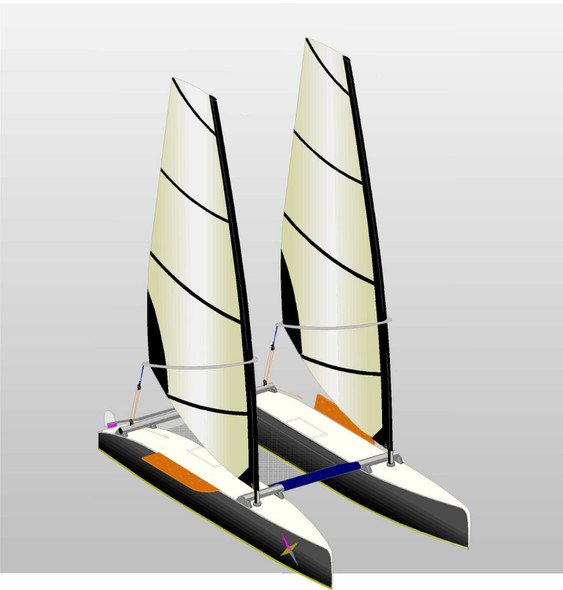
DUO 480 Adventure

DUO 900 Study Plans

DUO 900 Plans
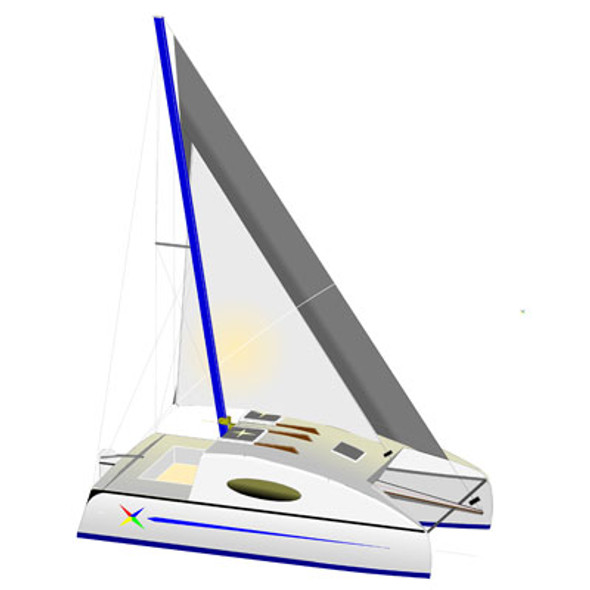
ECO 520 PDF

MaXi The Cat Plans PDF

New ECO 55 Sail Plans
Duo 800 plans.

ECO 6 Plans

ECO 62 Houseboat Plans

"Fritz" a Tender

Kidyak Plans PDF
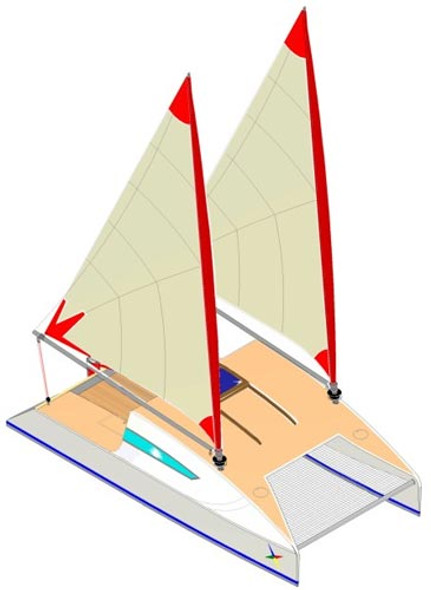
DUO 480C "jigsaw" Plans
- Total: items /
- Add all to cart
Adding your products to cart

IMAGES
VIDEO
COMMENTS
If you were to build a 40-foot (12.1-meter) catamaran, your cost of materials would range between 20-30% of the total cost. Therefore, for $300,000 total, the boat's materials would range between $60,000 and $90,000. The hull tends to range between 15-35% of the total build.
Catamaran Stock Plans. ... Plans are leased to build ONE boat, NO time limit. Tri-Star designs are proven designs, sailing the seven seas since 1964. Free consultation is provided to the original non-professional builder till he or she is sailing the seven seas. All boats may be built with flared hulls, with the exception of the TRI 25, TRI ...
We provide stock boat plans for both monohull and multihull sailing vessels, including sailing skiffs and sharpies. Our designs mainly feature timber construction, in plywood or cedar strip plank composite construction, using the W.E.S.T. system (wood epoxy saturation technique). Our designs are intended mainly as cruising boats, although ...
Catamaran and Trimaran Boat Plans make it a reality to build your own catamaran or trimaran. Multi-hulled sailing vessels are a special class of boat. A very different mind set is required when thinking about sailing a multi hull, let alone getting your head around building one.
Fast cruising ALUMINUM CATAMARAN . BOAT PLANS & FULL SIZE PATTERNS - Package Includes latest sail boat plans, SAILBOAT building plan updates & revisions, PLUS direct contact with the designer. This CATAMARAN was designed for personal use or charter work and the accommodation was laid out with that in mind.
CUTTING FILES & BOAT PLANS FOR ALUMINUM CONSTRUCTON. The CATAMARAN 65 MS was designed for personal use or charter work or as a people carrier and the accommodation was laid out with that in mind. There will be two basic layouts - personal arrangement as shown here plus an arrangement more suitable for charter use.
Order the Latest Design Portfolio today to see over 85 multihull plans in stock. Besides illustrating my stock designs, for which I sell study plans and full construction plans, it also contains my design philosophy of multihulls; an article on the rapid Cylinder Mold (pdf) or Cylinder-molding (in html) multihull construction; examples of ...
Our construction plans and kits are sold with 100% professional boatbuilder support via phone and email, any time you're unsure or just need a second opinion, we're here. ... The first step to building your dream catamaran begins with a strongback - this is a square frame used to position the temporary frames that will be used to form the ...
Easy to build catamaran ideal for inexperienced amateur boat builders. This easy to build catamaran is intended to allow anyone, no matter their background, to build a modern cruising multihull with a thrilling performance and an appealing design with a small budget. The Bora-Bora 28 has a very practical interior lay-out with accommodation ...
Skoota 28 Boat Plans (SK28) $ 1,275.00; 28' power catamaran with cabin, disassemble for towing. Add to cart; Skoota 32 Boat Plans (SK32) $ 1,530.00; 32' power catamaran with cabin. Add to cart; Skoota 36 Boat Plans (SK36) $ 2,231.00; 36' power catamaran with cabin. Add to cart; Facebook Youtube Envelope Instagram Twitter Tiktok
Affordable. Building your own boat with Wharram Designs is the easiest and most cost effective way to fulfil your sailing dreams. Wharram Self-build boat plans start from only £120. Wharram designs are based on years of practical, hands-on experience of building and ocean sailing catamarans. They are renowned for their seaworthiness, stability ...
The most important catamaran design hull shape factor, is the Prismatic Coefficient (Cp). This is a measure of the fullness of the ends of the hull. Instinctively you might think that fine ends would be faster as they would "cut through the water better". But in fact you want a high Cp for high speeds.
Classic Designs. Boat Building Plans. The 'Classic Designs' are recognised as beautiful, safe boats - easy to build, easy to sail, sturdy and stable. Many anchorages around the world are graced by these Classic Designs, and nine are still available, from the 16ft Maui to the 51ft Tehini. They were the first range of Wharram catamarans, designed ...
The DESIGNER'S book TRIMARAN and CATAMARAN CONSTRUCTION is part of the plans (over 21') and covers all phases of construction. Plans are leased to build ONE boat, NO time limit. Tri-Star designs are proven designs, sailing the seven seas since 1964. Free consultation is provided to the original non-professional builder till he or she is sailing ...
We design world renown sailing catamarans, trimarans and power cats. Contact us to purchase building kits and plans or to find the right professionals and resources to bring your project to life. GRAINGER DESIGNS. ABOUT US; RAKU SAILING CATS. Raku 44; Raku 48; Raku Custom 66. Raku 52 ...
DUO 900 Plans For study plans click HERE The DUO 900 is a quick-to-build, open-bridge catamaran with asymmetrical hulls. The boat was designed for a French fighter pilot who lived in Argentina. His goal was to sail from Buenos Aires to Marseille. Looking...
We have close relationships with a number of multihull boat builder companies around the world or we can provide design plans and support service to your choice of boat builder. Bring your ideas to life! Call Bloomfield Innovation today! for Catamaran Plans. at +61 3 9221-0883. -or email-.
45 FT Catamaran Workboat (1740) 44' 7" / 13.59 m. 17' 7" / 5.36 m. 16,100 lbs / 7,303 kg. 15,750*. SPECMAR Catamaran Hulls are either symmetrical or asymmetrical in design. A symmetrical hull consists of two basic V-bottom hull structures. Asymmetrical hulls are basically a monohaul craft split down the middle and spread apart.
archie1492 Junior Member. Dear all, I want to create a detailed building information model for a 13 - 15 meter catamaran that is capable of being CNC cut and assembled. I need some help finding plans I can use as a basis of design. Specifically, I need the hull profile information. Section cuts through the hull will give me the ideal contours ...
Since then nearly 1000 Tiki 21 Plans have been sold (2015). In 1991-97 Rory McDougall sailed his self-built Tiki 21 'Cooking Fat' around the world, sometimes alone, sometimes with a companion. She was, and still is, the smallest catamaran to have circumnavigated. In 2010 Rory entered 'Cooking Fat' in the Jester Challenge (single handed 'race ...
Explore HH Catamarans, the premier builder of luxury performance cruising catamarans. Discover award-winning designs and innovative carbon construction. 0. ... With its powerful rig plan, extra-large cockpit, king size beds, and deep daggerboards, the HH60 is sure to ignite the imagination.
Catamaran Cruiser 1035. With a comfortable 20 foot cabin and more than 300 square feet of outside deck space, the 10'x35' Catamaran Cruiser offers a very practical floorplan for those wanting more room than the 8' wide model. With many of the same amentities as our 12' wide one and two bedroom models, the 10'x35' was recognized at the ...
DUO 900 Study Plans For full plans click HERE The DUO 900 is a quick-to-build, open-bridge catamaran with asymmetrical hulls. The boat was designed for a French fighter pilot who lived in Argentina. ... The ECO 520 is the next catamaran from my jigsaw series. The first was the DUO 480 C. For study plans, click HERE The clue is, that the hulls ...